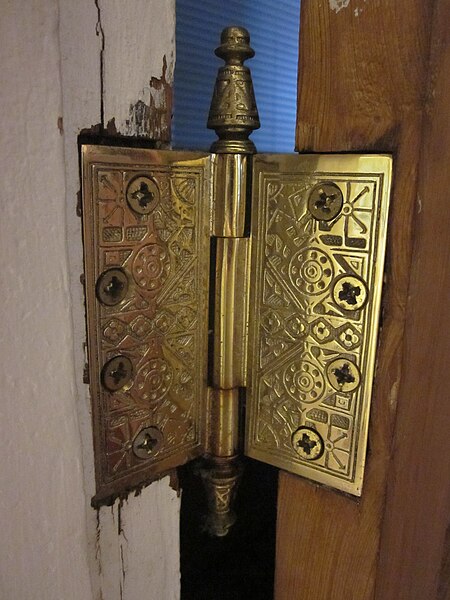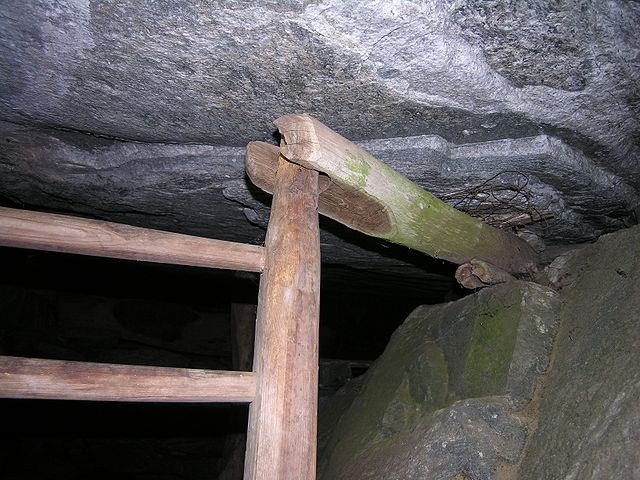A hinge is a mechanical bearing that connects two solid objects, typically allowing only a limited angle of rotation between them. Two objects connected by an ideal hinge rotate relative to each other about a fixed axis of rotation, with all other translations or rotations prevented; thus a hinge has one degree of freedom. Hinges may be made of flexible material or moving components. In biology, many joints function as hinges, such as the elbow joint.
An ornate brass door hinge
A barrel hinge
Old construction of hinges in the dry stone wall near Bignasco.
Ancient pivot hinges, found in the dry stone buildings.
Cardea or Carda was the ancient Roman goddess of the hinge, Roman doors being hung on pivot hinges. The Augustan poet Ovid conflates her with another archaic goddess named Carna, whose festival was celebrated on the Kalends of June and for whom he gives the alternative name Cranê or Cranea, a nymph. Ovid's conflation of the goddesses is likely to have been his poetic invention, but it has also been conjectured that Carna was a contracted form of Cardina, and at minimum Ovid was observing that their traditions were congruent.
Allegorical depiction of the Four Seasons (Horae) and smaller attendant figures that flank a Roman double-doorway representing the entrance to the afterlife, on a mid-3rd century AD sarcophagus





